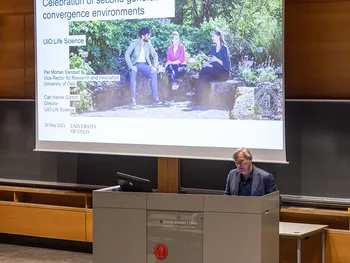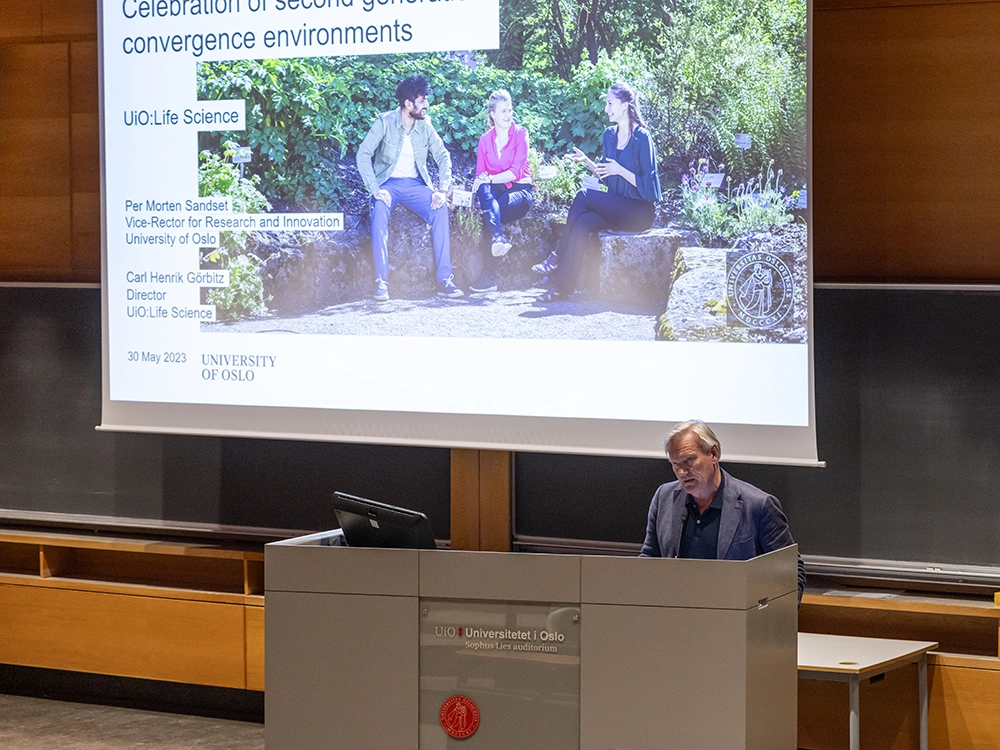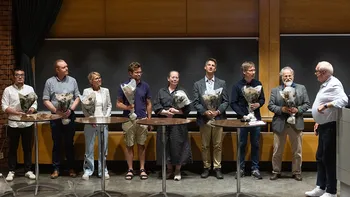- Convergence is a key word for both the life science initiative at the University of Oslo and for the life science building that will be finished in 2026, meaning that new ideas and groundbreaking research usually evolve within the intersection between different disciplines, said Per Morten Sandset, Vice-Rector for research and innovation, University of Oslo, in his opening speech.
In total, the eight convergence environments received 29 PhD and postdoctoral positions, which together amount to approximately NOK 100 million. Now the time had come to see what the interdisciplinary research groups have achieved during the funding period of four to five years.
The representatives from the convergence environments shared experiences from working with an interdisciplinary research project and also talked about challenges that appeared during the project. One of the convergence environment leaders stated in his presentation that "Interdisciplinary science is not business as usual." Several of the researchers were on the same page, working with an interdisciplinary project takes time, it takes a lot of effort to understand other disciplines, methods, terminology ?and research cultures, but working together in a convergence environment gives results you would not otherwise get.
The added value of interdisciplinary collaboration
For the eight convergence environments, it has paid off in the form of support from a number of external funding sources, awards, publication in well-reputed journals, creation of new interdisciplinary courses, drawing attention to and starting debates about themes and issues, new important networks, collaboration constellations and environments. The list of their achievements is extensive and impressive, and far from complete. In addition, many of the PhD fellows have submitted dissertations, some have defended their dissertations and others have already been recruited into postdoctoral positions.
The fact that the funding period is over for the convergence environments does not mean that the interdisciplinary research projects are closed. Some continue in the same form, others change direction slightly, new partners are added, new applications are written.
In the panel discussion, moderated by UiO:Life Science' chair ?yvind Fylling-Jensen, the leaders were challenged to suggest changes to the initiative on convergence environments. UiO:Life Science will include the input in the further work with established and future convergence environments.
These are UiO:Life Science' second generation convergence environments
- Artificial Biomimetic systems ?– the Niche of Islet Organoids (ABINO), Project leader Hanne Bj?rnson Scholz
- Availability and function of donor organs: Debating the dead donor rule (3DR), Project leader K?re-Olav Stensl?kken
- Consciousness and brain states: Neuroscience studies and conceptual innovation (ConsciousBrainConcepts), Project leader Sebastian Watzl
- Linguistics-driven machine learning to decipher the molecular language of immunity (ImmunoLingo), Project leader Victor Greiff
- Medical, legal and lay understandings of physical evidence in rape cases (Evidently Rape), Project leader May-Len Skilbrei
- MultiModal Mental Models: converging approaches from genomes to mental illness and interplay with psychosocial stressors (4MENT), Project leader Ole Andreassen
- Protons contra cancer (PROCCA), Project leader Eirik Malinen
- Rediscovery of medicinal plant usage in the “Age of Exploration”: From cultural historical heritage to innovative pharmaceuticals (REA:Life), Project leader Hugo de Boer




